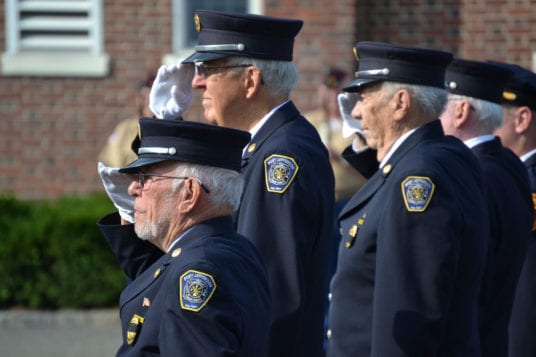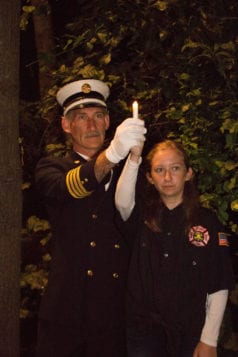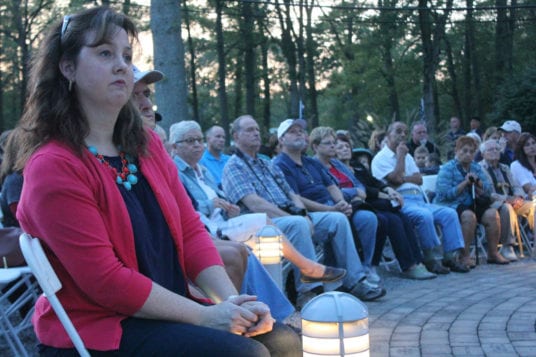By Alex Petroski
With the conclusion of a trial valet parking program in Port Jefferson Village, which along the way included input from members of the Port Jefferson Business Improvement District, The Greater Port Jefferson Chamber of Commerce, village government, the Port Jefferson Fire Department, residents, the Port Jefferson School District and restaurant owners, a resonating theme has emerged: It was a good idea that needs work if it will be brought back in 2018.
Tommy Schafer, restaurant owner, village resident and PJBID president, said in a phone interview the program fell short of reaching its break-even point for PJBID’s initial investment with the valet company. He said about 150 people used the service on average each weekend at a rate of $7 per car. When the program began Schafer said if the service drew 100 users nightly it would be a profitable venture.
“It was some sort of step towards a solution,” he said. “The upside of it is everyone who used it thought it was the best thing ever. We got praise for trying an idea like this. Hopefully next year we can go back to the table with a better plan.”
John Urbinati, owner of The Fifth Season restaurant, expressed a similar sentiment.
“It’s a big project,” he said in a phone interview. “It was a lot of people working on it and any time you have any sort of new projects or new activities … nobody has the foresight to get it totally right the first time.”
He added the plan will be to look at ways to streamline the service in the lead up to the summer of 2018 with an eye toward improvement — not disbanding the program.

Restaurant owners who were involved in the planning of the program this past summer and others who were not said they were glad valet parking was tried as a fix to an age-old problem in Port Jeff. The service began in July after a group of business owners announced their intentions to pursue the program to the village board once PJBID reached an agreement with the private valet company and the Port Jeff school district, which allowed cars to be parked in the vacant high school lot during the summer. It concluded after Labor Day weekend.
Logistical issues occurred along the way, including complaints from residents about the route drivers would take upon exiting the municipal lot off Maple Place behind Ruvo East restaurant where customers were staged before their cars were taken to the high school; a lack of signage at the entrance of the lot off Maple Place which historically had been a two-way entrance and was repurposed as a one-way, exit only during the program’s hours of operation; traffic on the street, which is also the site of the fire department; not enough promotion of the program to make visitors aware of it; and a disruption of the regular uses of the lot behind Ruvo East, among others.
Sound Beach resident Arthur Rasmussen was critical of the program in an August letter to the editor after he was instructed to use the valet service to visit Ruvo East when he complained the staging area was blocking handicapped parking for the restaurant.
“We were so incensed by this ‘shakedown’ that we called the restaurant and cancelled our reservation and drove to a restaurant in Mount Sinai,” he said. “My wife is on a walker and that particular handicapped spot gives her easier access to the restaurant. I thought that the valet parking program was voluntary and not designed to cause hardship on handicapped seniors.”
Initially the village was not going to be involved in the operation of the program, but because the staging area is a village lot its approval was required. Restaurant owners and director of operations of The Greater Port Jefferson Chamber of Commerce Barbara Ransome said the program would likely benefit with more village input.
“I would like to see it continue, I think there’s a lot of work that needs to be done,” she said. “They have to have better [public relations], better advertising and for God’s sake more signage. There aren’t many options out there. I think this is one that could work, it’s just got to be looked at.”
Village Mayor Margot Garant and deputy mayor and trustee, Larry LaPointe, could not be reached for comment regarding the village’s involvement with the project going forward.
The program was set up to be cost neutral for the village. Had revenue exceeded the initial investment, 25 percent of profits would have gone to the valet company and the remaining 75 percent would have been split between the school district and village.








 There are cool-season ones (feather-reed grass, blue fescue) that start growth soon after winter and warm-season ones (switchgrass, Miscanthus, fountain grass) that are delayed until the heat of May.
There are cool-season ones (feather-reed grass, blue fescue) that start growth soon after winter and warm-season ones (switchgrass, Miscanthus, fountain grass) that are delayed until the heat of May.

 Scatter or drift Muhlenbergia (muhly grass) in the same proportion as the feather-reed grass. Again, grasses should usually be planted en masse, to create the naturalistic mood, but they don’t necessarily need to be planted as a block.
Scatter or drift Muhlenbergia (muhly grass) in the same proportion as the feather-reed grass. Again, grasses should usually be planted en masse, to create the naturalistic mood, but they don’t necessarily need to be planted as a block.


 Opening ceremonies will begin at 8:30 a.m. and include a performance by the Asian Veterans Color Guard, singing of the National Anthem by Erin and Keira Pipe, a Blessing of the Dragon and “Eye Dotting” ceremony to awaken the dragons, a history of dragon boat celebration in English and Chinese by Port Jefferson School District students and a special appearance by the dragon mascot, sponsored by the Harbor Ballet Theatre.
Opening ceremonies will begin at 8:30 a.m. and include a performance by the Asian Veterans Color Guard, singing of the National Anthem by Erin and Keira Pipe, a Blessing of the Dragon and “Eye Dotting” ceremony to awaken the dragons, a history of dragon boat celebration in English and Chinese by Port Jefferson School District students and a special appearance by the dragon mascot, sponsored by the Harbor Ballet Theatre. In addition to the races, there will be a day-long festival featuring numerous performances including the famous Lion Dance, Taiko Drum performances, martial arts demonstrations and Asian singing and instrumentals. New this year is the addition of a long-spout teapot ceremony, a type of Kung Fu tea performance.
In addition to the races, there will be a day-long festival featuring numerous performances including the famous Lion Dance, Taiko Drum performances, martial arts demonstrations and Asian singing and instrumentals. New this year is the addition of a long-spout teapot ceremony, a type of Kung Fu tea performance.

















































